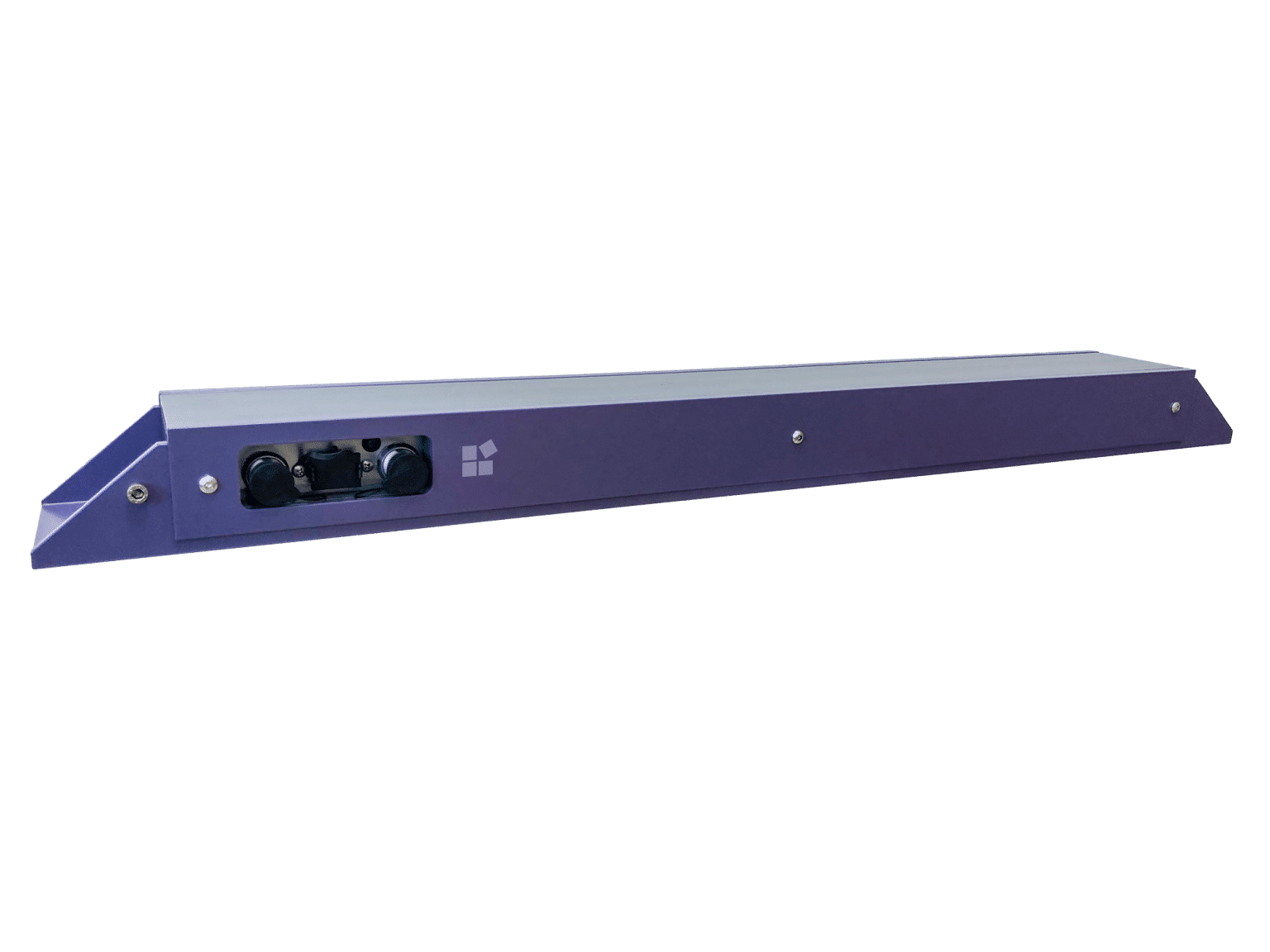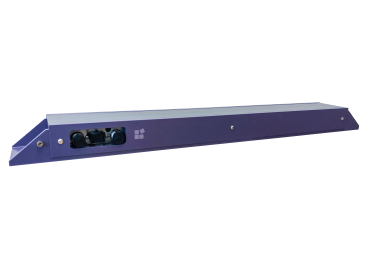Products & Services Inductive Sensors
EVK ABAS Inductive Sensors
Inductive sensors measure the electrical and magnetic properties of various materials to detect ferrous and non-ferrous metals.
EVK ABAS inductive metal sensors provide spatially resolved information about different metals in bulk material flows. The metal scanner is mounted under a conveyor belt and operates in real time, is fully automated, and specifically designed for industrial applications. Particularly in sensor-based sorting and inspection, the sensor serves to visualize and detect the electrical conductivity properties of materials.

Products
EVK Abas
The EVK metal sensors support industry-standard interfaces GigE Vision and GenICam for easy and fast integration and come in sizes compatible with typical machine working dimensions. Moreover, these sensors require minimal maintenance as they have no moving parts, reducing operational costs.
Spatially Resolved Metal Sensor
- Working width from 600 mm to 3000 mm
- GigE Vision/ GenICam interface
Smart Metal Sensors to Obtain Spatially Resolved Real-Time Information
EVK ABAS are intelligent metal scanners that detect metals and metal alloys, enabling sensor-based, non-contact sorting. The inductive sensors work in real-time and detect metal parts directly in the process line. This is particularly crucial in applications where large quantities of materials are processed, such as in the waste and recycling industries. The sensors’ high scanning speed makes metal recovery highly efficient and productive.
Value Statements
Spatial Resolution
A unique feature of EVK metal sensors is their spatial resolution. The line scanner provides detailed information about the object's position in the line and delivers precise data to the ejection unit.
In-Line, Real-Time Metal Detection
EVK's inductive sensors can detect metal objects directly in the line. Mounted under a conveyor belt, they make sure ferrous and non-ferrous metal particles are detected without contact.
Rugged, Industrial Design
The EVK ABAS metal sensors are designed for sustainable use in harsh environments. They can come into contact with dust or dirt without being damaged.
Quick and Easy Integration
The inductive sensors support standard interfaces. They can be quickly integrated into existing systems and are mounted directly under a conveyor belt.
Short Time-to-Market with Integrated EVK Solutions
EVK provides personalized all-in-one solutions from a single source. Get hardware, software, and integration services from EVK for a fast and flawless market launch. In combination with the corresponding I/O module from EVK, for example, valves can be controlled with precision.
All
products
From Metal Detection to Material Removal –
Seamless Integration of EVK Metal Sensors
Combined with the I/O module for controlling actuators such as flaps, air nozzles, etc., EVK offers a all-in-one solution, from metal detection to controlling actuators to eliminate materials from the stream. The I/O module communicates either directly with the metal sensor via an interface developed by EVK or a standard Modbus with a host. EVK’s proprietary interface makes it possible to rapidly and efficiently develop metal removal systems and the Modbus interface ensures easy connection to existing hardware.
EVK Sensor Fusion to increase the sorting depth
EVK combines data from different sensors e.g. metal sensors with hyperspectral or color cameras. The key data extracted from the results serve as a basis for further process-relevant decisions. Materials can be classified based on their color, shape, size, chemical composition, and conductivity, and, if desired, sorted or ejected in real-time.
More information
about EVK Sensor Fusion
What are inductive sensors and how do they work?
Inductive imaging refers to an imaging line scanner that provides an image of objects based on their conductivity. When a conductive material approaches the inductive line sensor, eddy currents are generated in the material by the magnetic field generated by the sensor. These eddy currents counteract the exciting magnetic field and thus produce a measurable reaction to the excitation field. The strength of this reaction provides information about the distance and size of the conductive (metallic) material.
EVK ABAS utilizes this effect and generates binary information that is processed in real time and forwarded directly to control units. In addition, EVK’s inductive sensors can react not only to metals, but also to ferromagnetic materials such as ferite. In combination with an I/O module developed by EVK, users receive a complete solution for the detection and sorting of ferrous and non-ferrous metal particles.
The I/O modules are expansion systems that use metal sensor data to control actuators. As soon as a metallic object is detected, for example, a flap or compressed air valve opens and separates the material from the line. In this way, metals can be sorted efficiently and directly from the process line.
Important parameters of these sensor types are sensitivity and selectivity. The sensitivity of a metal scanner describes the size that a metal particle must have in order to generate an output signal. It should be noted that the distance between the metallic object and the sensor influences the sensitivity of the sensors. The selectivity of a metal sensor is its ability to distinguish between different metals.
More Info at
our Technology Center
Use Cases
EVK’s inductive sensors have been used successfully in numerous applications for many years.
Machine and plant manufacturers, as well as plant operators from various sectors, such as the waste and recycling industry, the food industry and mining, rely on the quality and competent services of EVK.
Our Professional Service will be happy to support you with your project, from the conception, integration and industrialization phase.
